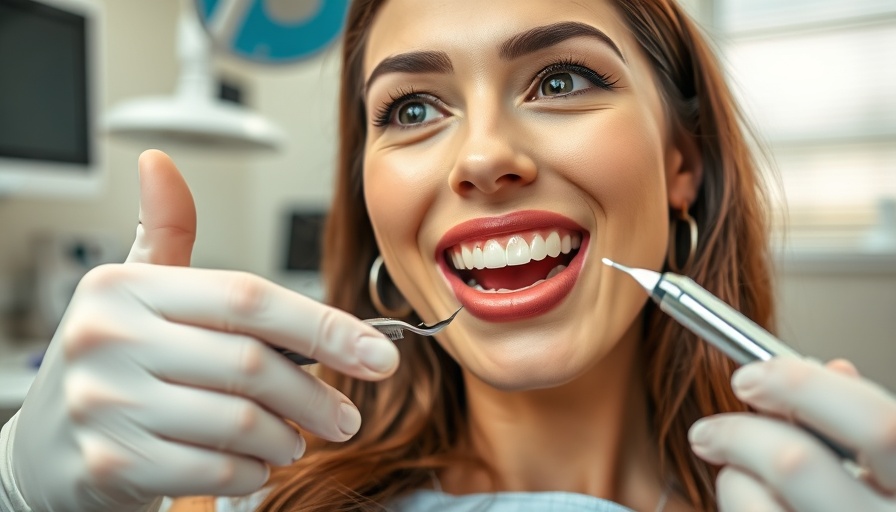
Understanding the Difference: Polishing vs. Whitening
Many people walk into the dentist’s office with the hope of brightening their smile, often wondering if polishing their teeth will achieve that goal. While polishing can enhance the appearance of your teeth by removing surface stains, it’s essential to clarify that it doesn’t truly whiten them. In this article, we delve deeper into the myths surrounding dental polishing, its effects, and effective teeth-whitening strategies.
In 'Does Polishing at the Dentist Actually Whiten Your Teeth?', the discussion dives into the nuances of dental polishing versus whitening, prompting a deeper analysis of effective teeth whitening methods.
What Happens During Dental Polishing?
Polishing teeth involves the use of gritty toothpaste-like material applied through a spinning rubber cup or brush. This process is commonly part of a professional cleaning session and serves multiple purposes:
- Cosmetic Improvement: Polishing can effectively remove superficial stains caused by coffee, tea, wine, or smoking. Not only does this enhance one’s smile, but it also contributes to overall confidence.
- Smooth Texture: A smooth surface makes it harder for plaque to accumulate. This is crucial for long-term dental health, as it reduces the risk of gum disease and cavities.
- Fresh Feel: The minty flavor and smooth finish after polishing leave your mouth feeling exceptionally clean, making it a pleasant experience!
While polishing does make your teeth look cleaner, it cannot penetrate the tooth enamel to lighten the deep-set discoloration that occurs over time.
The Reality of Teeth Whitening Options
If you’re aiming for a visibly whiter smile, dental polishing alone won’t suffice. Below are four effective teeth whitening methods that utilize peroxide-based ingredients:
- Whitening Strips: These budget-friendly strips work effectively for beginners, although they require daily use over weeks.
- Semi-Custom Trays: These trays adapt to your mouth better than strips, giving a more customized fit while remaining affordable.
- Custom-Trays from Your Dentist: A more expensive but long-term solution, custom trays can last years and may ultimately save money on whitening treatments.
- In-Office Professional Whitening: This rapid option delivers visible results in about an hour, but be warned—sensitivity spikes can occur post-procedure.
Each of these methods aims to break down the pigment molecules that cause discoloration, providing a significant difference in brightness compared to what surface polishing achieves.
The Importance of a Regular Oral Hygiene Routine
Regardless of the whitening method chosen, maintaining a routine oral hygiene regimen is vital. The health of your gums and teeth dramatically impacts your overall appearance and health. Regular brushing, flossing, and dental checkups ensure that your teeth stay healthy and free from decay and gum disease.
To further enhance your dental health, consider utilizing dental products that promote cavity prevention and fight plaque and stains effectively. Implementing good dental health habits now paves the way for a brighter smile in the future.
Final Thoughts on Dental Polishing and Whitening
In conclusion, while dental polishing can help improve the exterior look of your teeth by removing surface stains, it doesn’t replace the need for a systematic approach to teeth whitening. It’s instrumental in maintaining a clean and smooth surface that reduces plaque buildup. To achieve your ideal smile, combine polishing with effective whitening options and stay committed to your oral hygiene routine.
If you’re eager to transform your smile or learn more about creating an effective oral hygiene routine, click the link to get a free oral care guide that lays out steps to prevent decay and maintain a radiant smile.
 Add Row
Add Row  Add
Add 




Write A Comment